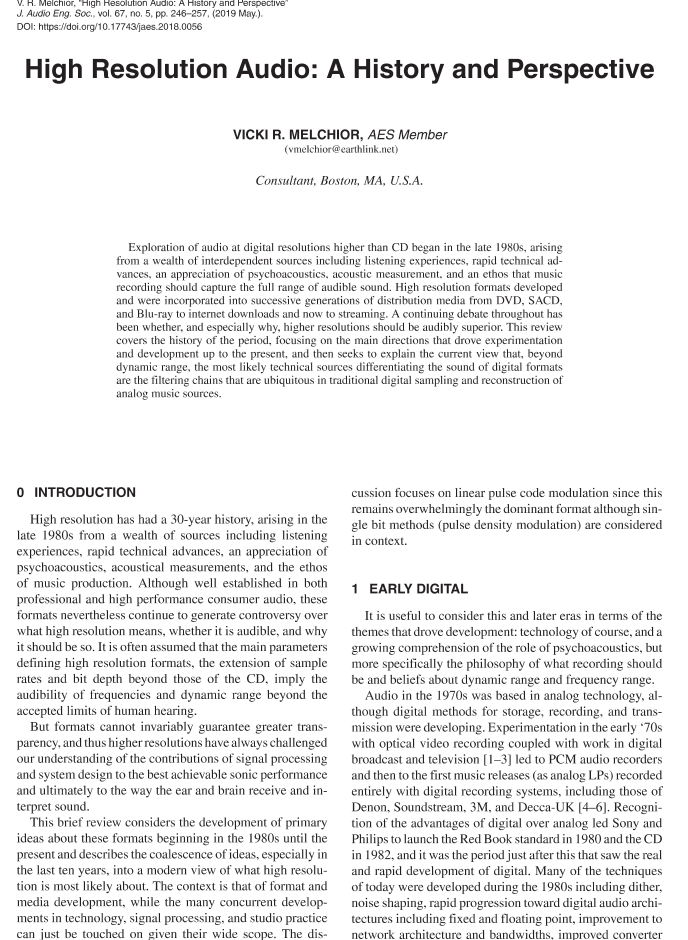Originally posted by ssokolow
View Post
The table on that wikipedia page with information about the human eye we have very detailed information. You take take a person basic body dimensions work out a max visibility of pixels at different distances. The colour range humans can see we know all the DNA variations to generation a max range.
Yes your eyes my eyes may have different calibrated frequency response but you can draw a area map that called max human vision and be sure that every single human is inside that. Problem with human hearing bad if you were asking for what is hear by the ears/inner ear you could draw a area map like this. Once you talking about total human hearing include just infrasonic that humans can hear without the ultrasonics you no longer have the data to draw that area map exactly any more. This is the first start of the problem.
Next is a thing I call ear wear. As long you listen to the same frequency the less you can come able to hear it this is a related mechanic to industrial deafness. Yes the shape of the frequency waveform does effect the speed of this. This lead to a common problem were a person will say like I find a 96kHz audio out is better 48kHz. The people get a smart ass idea of doing a blind test and the person cannot tell the difference between 96kHz and 48kHz so then argue that there is no difference because person cannot tell the difference and it because they testing the wrong thing.
Reality person who end up preferring 96kHz could have been listening to music hours at a time. Better waveform less ear wear and more likely that the signal from ear to brain will be the same at first song as the last song few hours latter due to the lower ear wear issue.
You vision is not like this generally if it was it would be insanely wacky and possible dangerous just think walking around like magically not being able to see red because you have seen too much red for the day and that will then come back when your rest your eyes. Yes Audio in the inner-ear is really like that you have listening to a too harsh of X frequency the hairs in you cochlear for that frequency get stuck and you can no longer hear that frequency until they reset that could require you to sleep before they come back and if it been done too badly this is forever hearing loss.
The mechanics of the inner-ear are a true pain in the ass. Please note the mechanics for the infra-sound and ultrasound areas of human hearing are equally as bad where depend on when and how much you test a person you can get very different results let along what sound they have been exposed to differences.
We really do need to admit how annoying complex hearing is and how little we really do understand it. We know way more about vision and vision is no where near the complexity hearing is.
Subconscious brain messes with visions(like you don't see the blind spots in your eyes) a bit but its no where near the amount it messes with hearing. Horrible what you think you hear can be altered by what you are currently seeing or smelling. Then you have the mechanical side of hearing that is no where near as reliable.
Hearing in humans being implemented on what you could call a non reliable mechanics that for everyone is at least some point though every day of their life has had multi-able failures this is even before being born from as soon as the inner ear is form and not notice because they have been hidden subconscious brain like vision blind spots so doing a stack of creative to cover up for failures. Add in personal bias and jumping to conclusions without proper research and study. This explains why Audio is a very much bigger arguement than monitors.
First thing everyone need to admit start line that hearing design in humans is a absolute mess. Lot of what people have been told in textbooks and so on about hearing is out of date garbage.






Comment